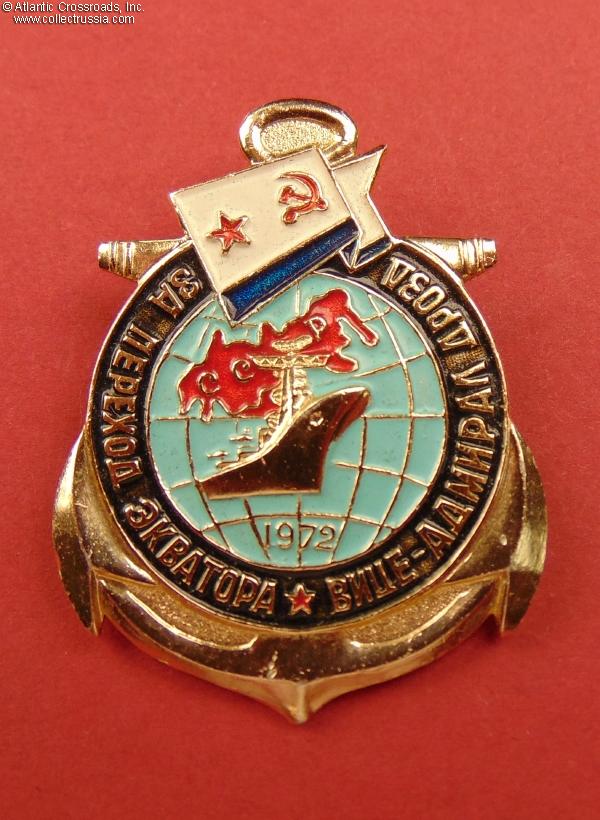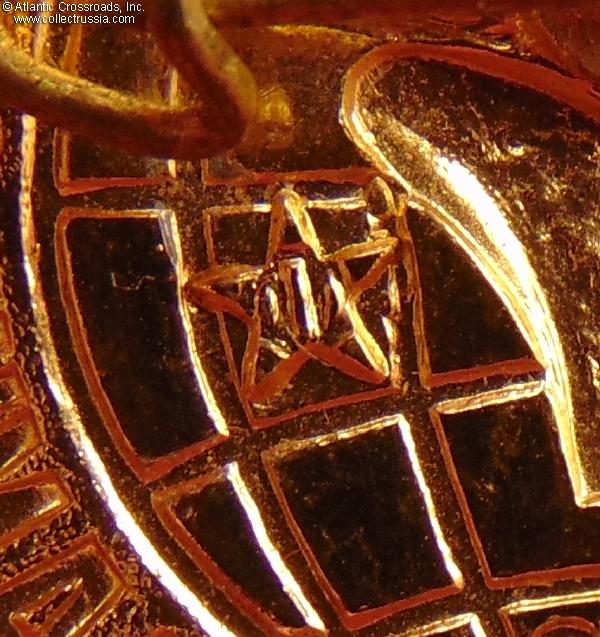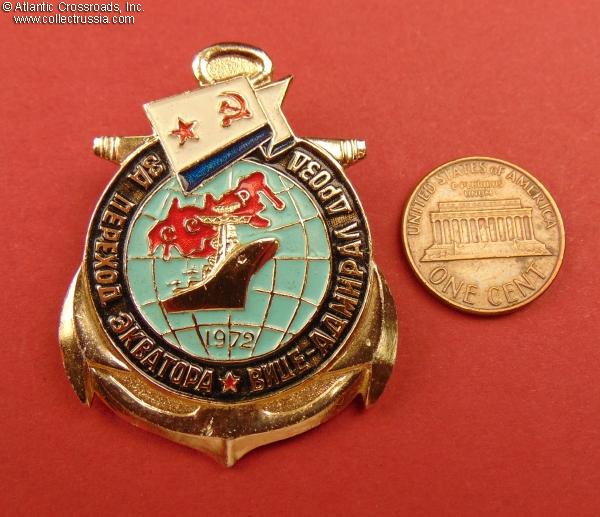
Badge for Crossing the Equator Aboard the Missile Cruiser Vitse-Admiral Drozd, 1972 issue.
Anodized aluminum, "cold" enamels, lacquer; 45.8 x 35.6 mm. The inscription along the edge is "For Crossing the Equator. Vitse-Admiral Drozd." The reverse has a raised star-shaped logo of the Pobeda Factory, Moscow.
In a typical Soviet manner, the badge does not mention the real reason for the award, but the seamen "in the know" knew what it was for: saving the crew of the Soviet nuclear submarine K-19. The submarine was the first Soviet nuclear ballistic missile-carrying "underwater cruiser", and it had a foul reputation among the Soviet sailors from the time it was commi
Anodized aluminum, "cold" enamels, lacquer; 45.8 x 35.6 mm. The inscription along the edge is "For Crossing the Equator. Vitse-Admiral Drozd." The reverse has a raised star-shaped logo of the Pobeda Factory, Moscow.
In a typical Soviet manner, the badge does not mention the real reason for the award, but the seamen "in the know" knew what it was for: saving the crew of the Soviet nuclear submarine K-19. The submarine was the first Soviet nuclear ballistic missile-carrying "underwater cruiser", and it had a foul reputation among the Soviet sailors from the time it was commissioned in 1960 (at its christening, the traditional bottle of Champaign thrown against its hull didn't break, which was considered a bad omen). Throughout its service history, the sub was plagued by accidents, including reactor malfunctions and radiation leaks. As a result, it became known among Soviet submariners by its nickname "Khirosima" (Hiroshima). The worst disaster took place in February 1972, when a massive fire caused an emergency shutdown of the propulsion system and ultimately led to the death of 30 crewmen. Although the disabled sub was eventually towed to port, most of the crew had to be evacuated, a massive rescue effort that took several days and was aggravated by stormy weather. The Vitse-Admiral Drozd, a Baltic Fleet missile cruiser of the Project 1134 (large anti-submarine ship by the Soviet designation or Kresta-I class by NATO classification) played a major role in the operation and in particular, extracted some 40 sailors of the K-19 by helicopter.
The story of the infamous sub was popularized in the west by the 2002 Harrison Ford movie K-19: The Widowmaker. The sub's conning tower has been preserved and is now installed in a village near Moscow as a memorial to its sailors.
Please note, the penny in our photo is for size reference.
$95.00 Add to cart




